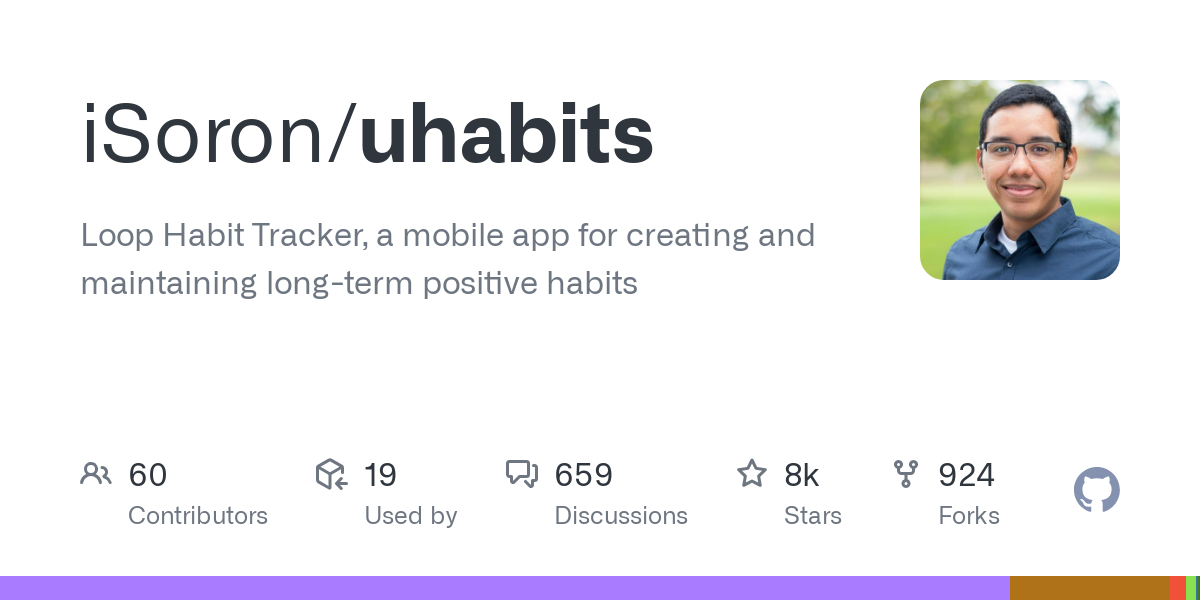- 14 Posts
- 72 Comments

 10·8 days ago
10·8 days agoCurious what you contribute to such that you have not had a bad experience, since I see people talk of bad experiences with the people in FOSS on every thread like this, and since you were downvoted for sharing your personal experience which, as far as I can tell, seems to be on-topic and civil with no hint of rudeness or “your bad experience definitely never happened/was your own fault”.
Speaking as someone who also has no/few bad experiences with certain situations where the majority’s experience (at least that I have seen online) is having a lot of negative encounters, so I believe you. I ask because maybe people who want to contribute to FOSS can try contributing to the (type of) things you do too ;)
I have no idea what you contribute to but thank you for your work!

 1·19 days ago
1·19 days agodeleted by creator

 3·21 days ago
3·21 days agoThanks, donated this way!

 2·1 month ago
2·1 month agoFor some ideas of what to do, this post by Teri Kanefield has a list of concrete actions that you can take: https://terikanefield.com/things-to-do/
Very much appreciated.

 1·1 month ago
1·1 month agoMe, pretty sure game dev is going to just be a hobby for me and that I will never try to sell a game, still enthusiastically reading the game marketing articles because they are interesting and it’s cool to know the strategies being used to market to me so I can be better prepared…

 4·1 month ago
4·1 month agoI have been using some of the learning resources, specifically this one https://linuxjourney.com/. I hope the video recommendations are helpful to you but I am kicking myself for not adding “also I really hate watching videos and would prefer to read something” to my original post. I have not actually made the switch yet, I want to back up my files first. Bought a new external hard drive with enough space. It was nonfunctional. Had to send it back for a warranty replacement and am waiting on the new drive to show up. Will reply again if I remember once I actually manage to switch over.

 1·1 month ago
1·1 month ago!linuxupskillchallenge@programming.dev for people who that link is not working for. (I, personally, get a
couldnt_find_posterror.)Sometimes I have been told my links don’t work by some other people, but they work for me logged in and logged out. Wonder if it’s that we’re using different clients, and if your link would work for the people who cannot open my link successfully.

 2·1 month ago
2·1 month agoWait no, I never had to change IDs. They are all unique and have been since I first defined them. I meant that the ID attribute of my element is the same as its name attribute and also its value attribute. Does any of the advice change given this?
Thank you!

 2·1 month ago
2·1 month agoThank you again so much for your advice. I read it all :)

 1·1 month ago
1·1 month agoI am curious if it is viable to do it just pure JS or if I really need to learn some popular frameworks/libraries. I have no idea where this resistance comes from, guessing it’s perhaps because “oh wow a whole framework” seems more intimidating than “learn to fix your code in a language you already know a little bit”, as someone unfamiliar with frameworks. I should probably learn them anyways.
I do have some of the code commented but I also recently found according to https://refactoring.guru that this is bad?
Final thing: most resources I am aware of are for cleaning up object-oriented stuff. Wondering about resources for cleaning up non-object-oriented stuff and when I should and should not be doing object-oriented stuff, seeing as I did not write this raw JS object-oriented. (Yes, I know you can still kind of imitate some of the design patterns anyways, just curious.)
Also need to find out if if’s okay to have the same thing appear twice in the HTML and how to put that in a constant if not, or if it would be better to programmatically generate it because a lot of it is pretty repetitive and the same string everywhere (except for the name attribute sometimes).
Again, thank you so much for your advice! I’ll definitely be checking these resources.

 2·1 month ago
2·1 month agoIt is JavaScript!
I wanted to say just thank you so much for your feedback and help, I really appreciate it. I’ll probably try to handle it as an array until final display to the user (tbh probably just me), where the commas and spaces will be used because that’s how English works and seeing an output of
stringOne,stringTwo,stringThreewithout the space would just irritate me a lot.I am aware of unit testing and know I should use it. I also didn’t use any frameworks and I’m not sure what I should use to test it when I didn’t use Node.js or React or anything like that (not sure if “framework” is the right word). My only knowledge of them is that sometimes when I fork other peoples’ projects I have to do stuff like
npm installandnpm run buildand I have a vague overview idea of what those commands do (install dependencies, compile the stuff and run it). What I actually did to test things was just using the website. I let it go because it is small, under 200 lines of code, and probably will not expand very much.Specifically the actual JS never has the string written down! I grab it from the HTML. Where it does show up several times: the element’s name, ID (wonder if I can just wipe it out of the name), often its value, and in the element’s label in the for attribute. Not sure what best practice is here.

 2·1 month ago
2·1 month agoI actually wrote it just once. It acquired the space like this:
I concatenate a bunch of strings together, and add a comma and space between them so I could get
stringOne, stringTwo, stringThreeetc. I later need to decompose that. I remembered I separated stuff with a comma, but forgot about the space following the comma and that is how I ended up having to deal with " NameHere" vs “NameHere” without having actually written NameHere several times in my code. Is there a better way to go about this?I have also just read my post again and it explicitly contradicts “I actually wrote it just once”. Not sure if I did write it multiple times and merely forgot as I typed this comment and claimed to write it just once, or if I just pretended I wrote it multiple times when it was only once so I could simplify explaining my problem. For the purpose of my question though, let us pretend I did write it once. I promise I am aware that strings that are frequently used should be made constant, although I could use more specifics on what “frequently used” is (more than once?) and I’m wondering if you actually should not really use strings at all and always go for constants.

 5·1 month ago
5·1 month agoNot sure if this question is too noobish for !programming@programming.dev so I posted it here just in case.

 2·1 month ago
2·1 month agoI am oddly charmed by the drawing, did you make it yourself?
While we’re here the quote is displaying
like this for me, made with
>instead of like this, made with just one

 3·1 month ago
3·1 month agoHowever, as I discovered to my cost, TiddlyWiki has never had a strong “start here,” because it is not tailored to one specific task. Obsidian, by comparison, has the advantage of a clear vision of what it does. TiddlyWiki bewilders you with options at first because it hasn’t been designed to be sold. The community focus is on adapting it to different use cases.
So I’m going to take the advice in this explainer and use TiddlyDesktop while mentioning that there are plenty of other arrangements. It is, after all, just HTML and JavaScript. Let’s get started…
You wrote this part twice in your post.
Cool tool though!

 5·1 month ago
5·1 month agoName would not be enough to stop me from using it but TiddlyWiki absolutely sounds stupid. It’s probably a play off “tiddlywinks” but that also sounds stupid. It’s something I’d cringe saying. I might unabashedly type out my recommendation with the name to a friend or send a link to it, but would try to dodge saying the name in an in-person conversation.
This hurts spread. One of the primary ways I find new software is by word of mouth from friends in-person (somehow I have an easier time ignoring or brushing off suggestions that are texted to me, and I take ones made in-person more seriously. I have no idea why), and I usually end up sticking with whatever they recommended.

 8·1 month ago
8·1 month agoAlso, what do you mean, OP, by “do you have perfect recall or an average human byte”? Are you thinking of information in terms of bits and that people can only keep a limited amount of things in working memory at a time?





An organization that can admit its mistakes, stand behind its employees, and offer a way to try to fix their mistakes? Now this is a great PR move.